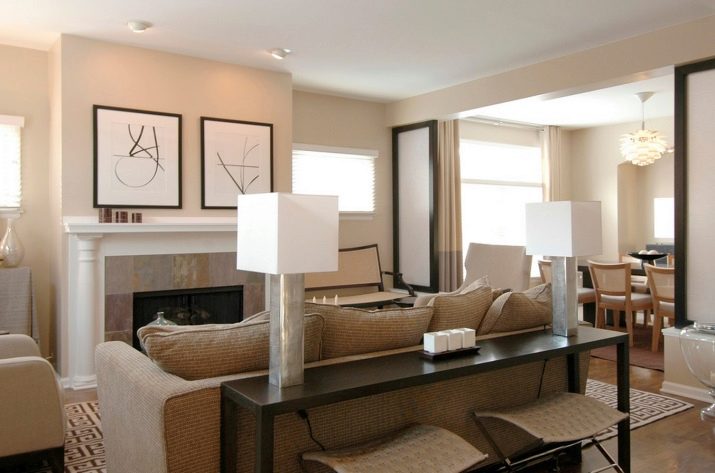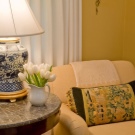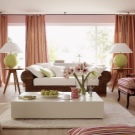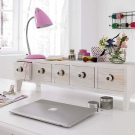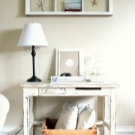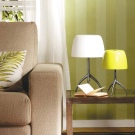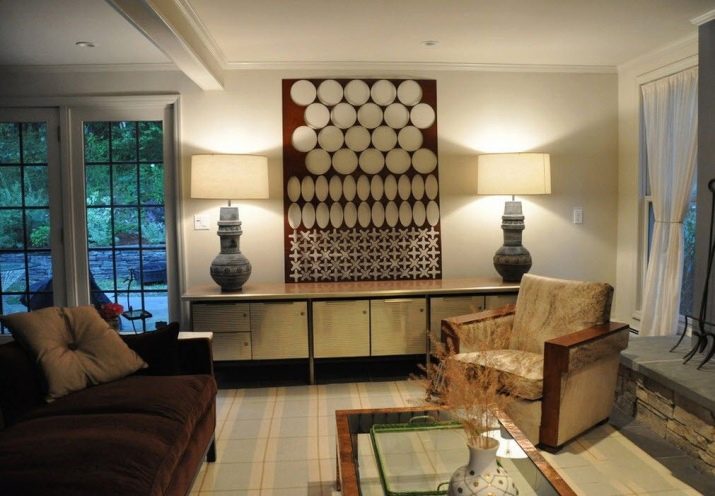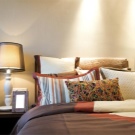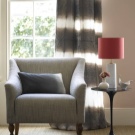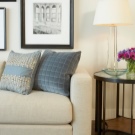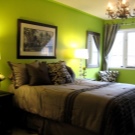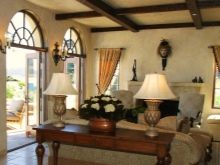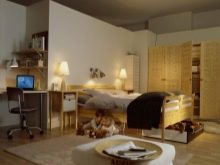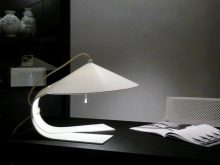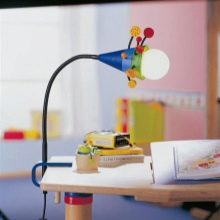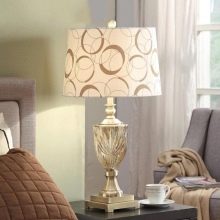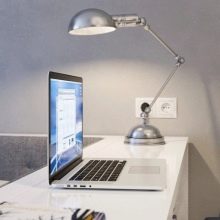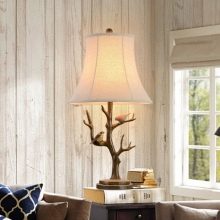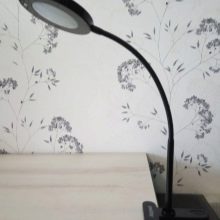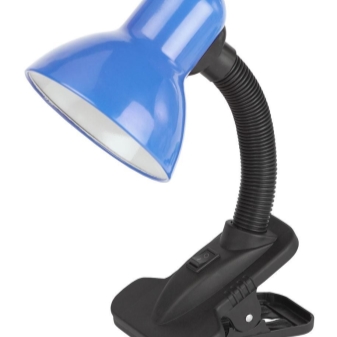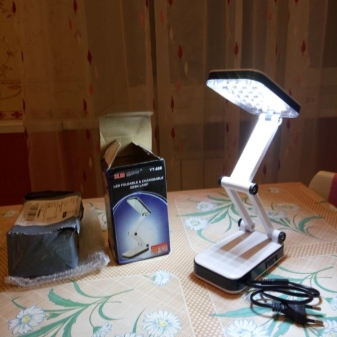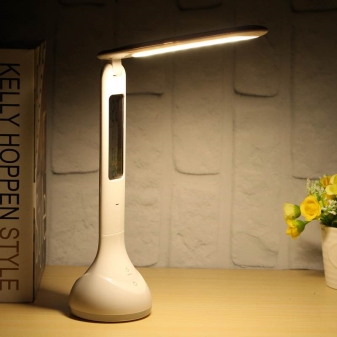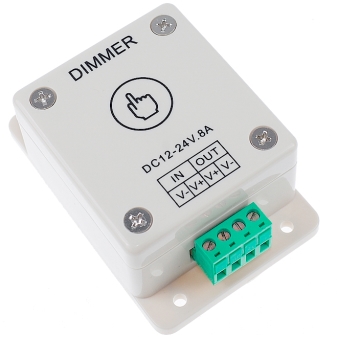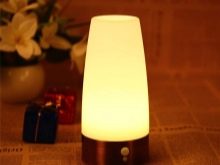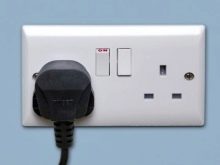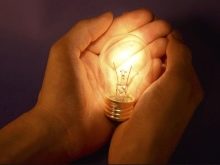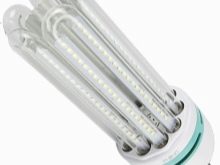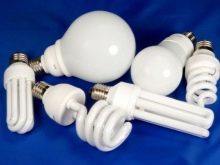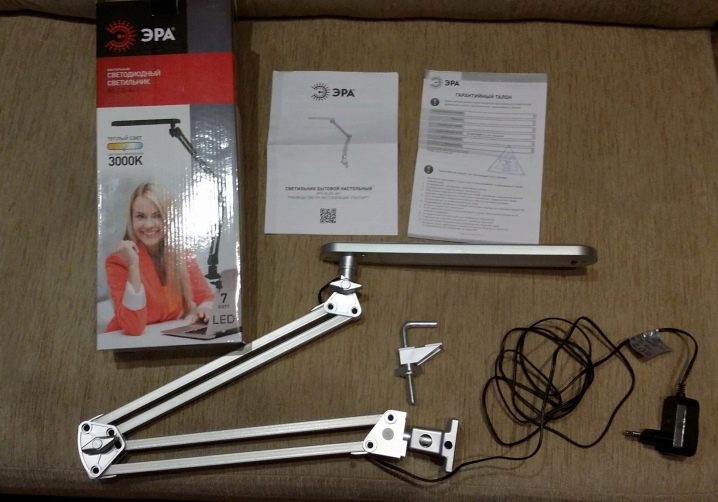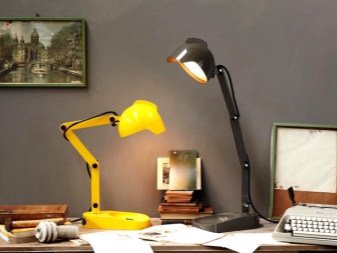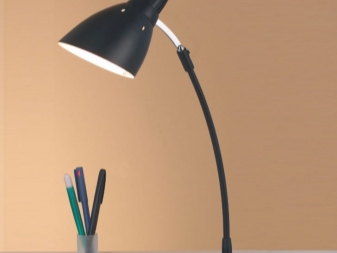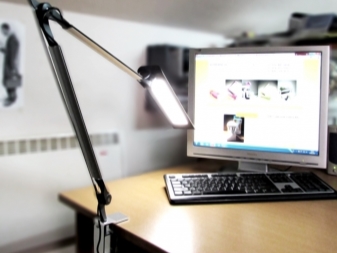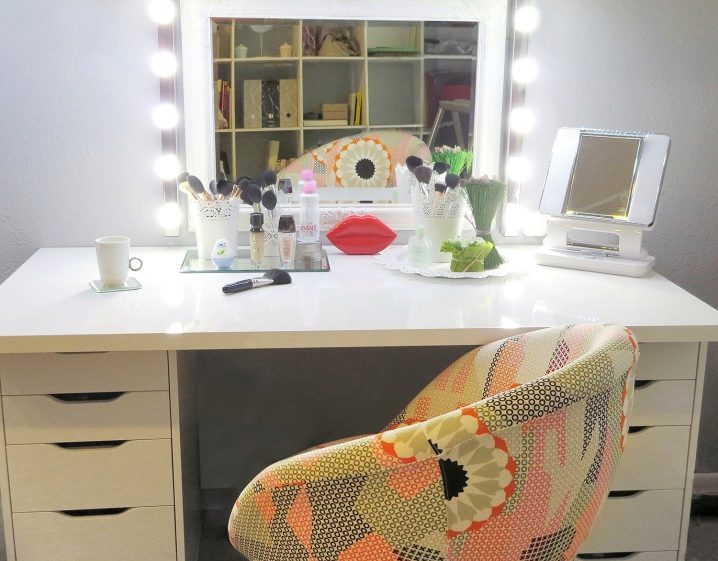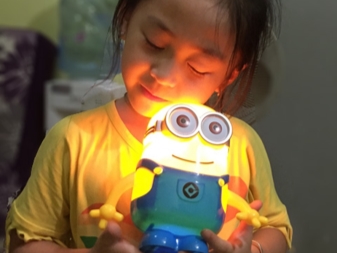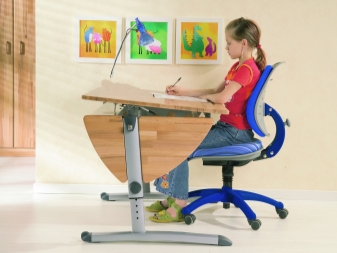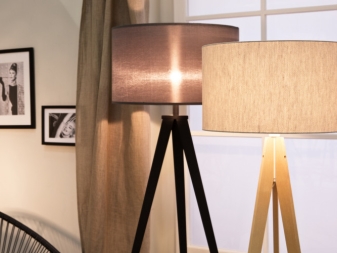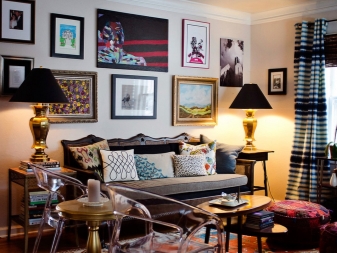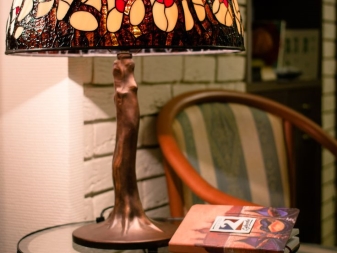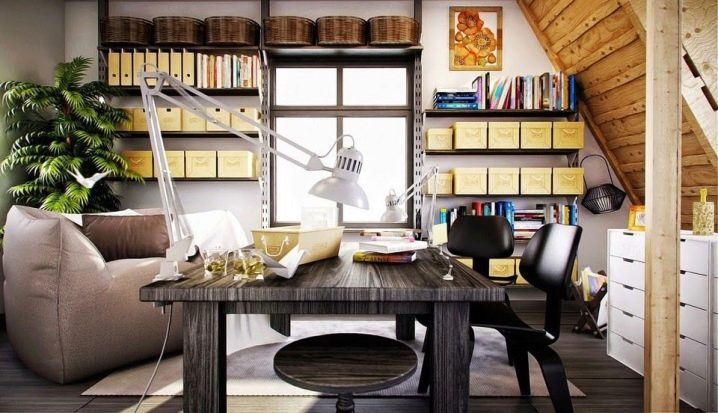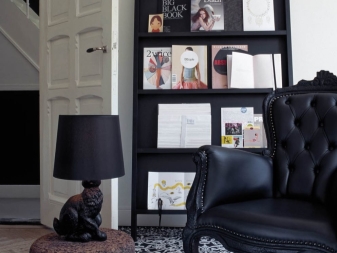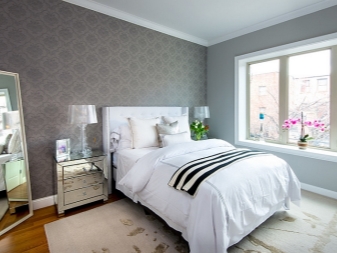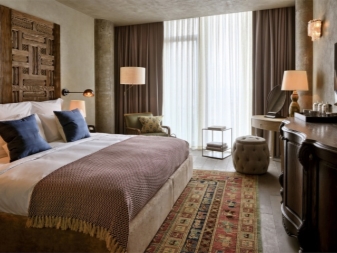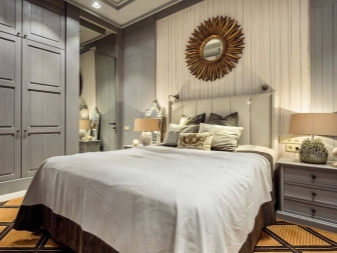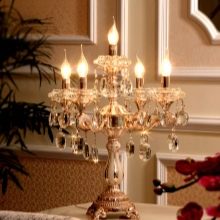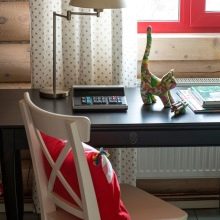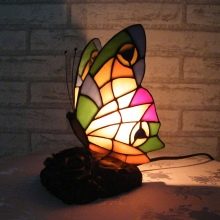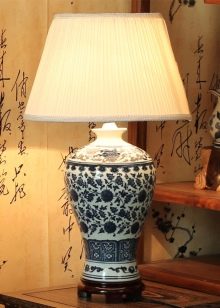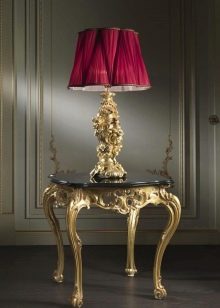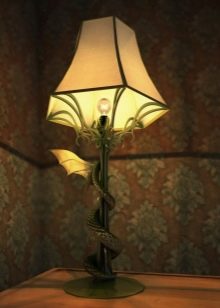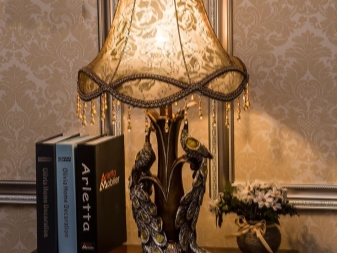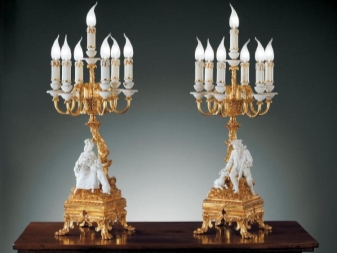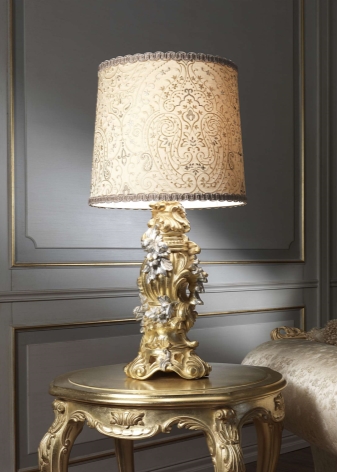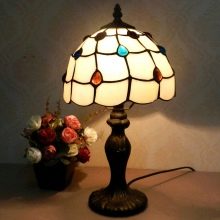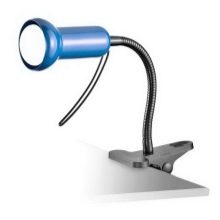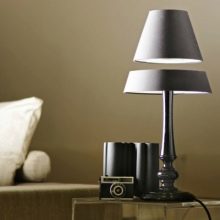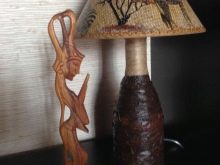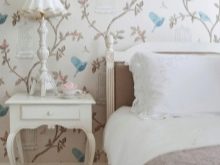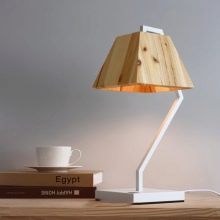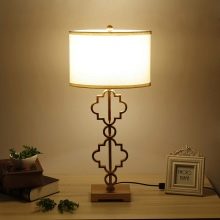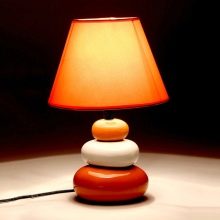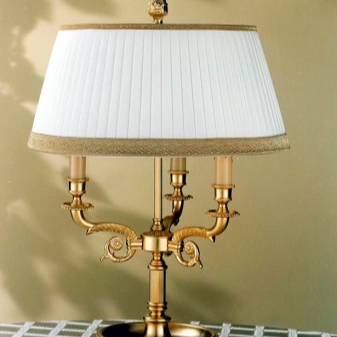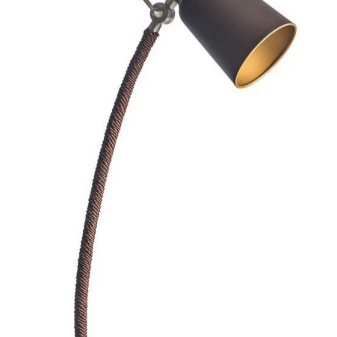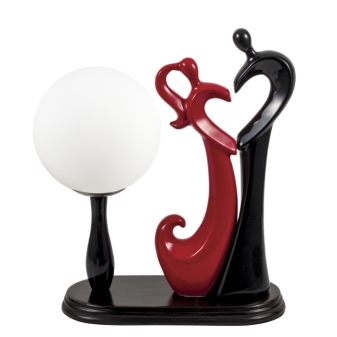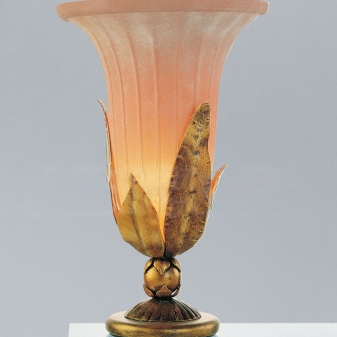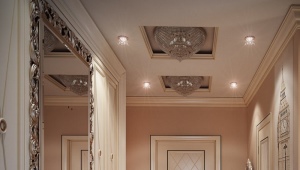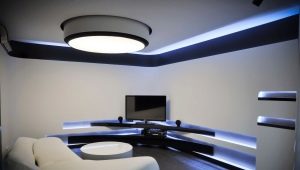Table lamps
The pledge of productivity and comfort at the work table or student table is largely determined by the lighting of the work area. Table lamps help to create the right atmosphere, additionally highlight the necessary areas on the table and next to it and keep your eyes from overvoltage. Properly selected lamp will facilitate the labor process and serve as a stylish decorative element in the room, so do not neglect this useful device, even if the overhead lighting in the room seems good enough.
Special features
The table lamp has some design and technical features that favorably distinguish it from wall or ceiling analogues:
- Locally enhance the brightness of the light and gently dissipate it, providing light comfort during intense visual exertion;
- Compact in size and light in weight, which allows without dismantling to move them within the house from one place to another;
- The ability to adjust the power of lighting by changing the bulbs of higher and lower brightness, or using an LED lamp with a dimmer (brightness control);
- Easy lamp replacement, even a child can handle it;
- Many working luminaires have adjustable height and body position;
- The use of modern lamps (LED, energy-saving), which last longer and spend a minimum of electricity:
- Variable design.
From the design features, however, there are some drawbacks of table lamps:
- Susceptible to mechanical stress. A lamp made of fragile material may not withstand impact, break or crack from a fall;
- Luminaires with incandescent lamps are a thing of the past, they have been replaced by energy-saving and halogen ones, which in many respects is a big plus. The only minus is the difficulty of disposing of luminaires in which mercury or harmful substances are used. They will have to be handed over to special points, since it is prohibited to throw them into containers with food garbage;
- Do not work offline. Almost all models need to be connected to the mains or to a PC using a USB-cable.Occasionally there are models on batteries, for example, nightlights, but the power supply device needs to be changed frequently.
Species
All table lamps are divided into two large groups:
- Functional - to illuminate the working area;
- Decorative - for the placement of light and color accents in the interior.
Both groups, in turn, can be further divided into several attributes: design, type of mounting, switch, power, equipment, lighting, specifications.
The design of the fixtures implies their separation according to the external characteristics of the fixtures for different rooms and different purposes. There are laconic and powerful lamps for offices, flexible lamps on legs for student desks, lamps for sewing tables, children's lamps and lamps in the form of machines, animals, interesting objects, lamps for bedside tables.
Common mounting types:
- With installation on a flat horizontal surface. This is the simplest and most common option, which is convenient in that it is easy to move within the working area, but it is also the most unreliable in terms of mechanical damage.Such a lamp is easy to push or drop, and the likelihood that it will not suffer is a big question;
- On the clothespin. Such a mount is usually present in fairly lightweight lamps. Their convenience is that you can fix the lamp not only for the side surface of the table, but also on the bookshelf and any ledge above the table. Dropping such a lamp is more difficult, but you need to be very careful when choosing a clothespin. If it is not strong, the lamp will not stick on an inclined surface;
- On the clamp. Most of all, this type of attachment resembles the method of fixing an old-style grinder on the edge of a table. One part of the mechanism is applied to the table top from above, and the second is screwed from the bottom up to the stop until the edge of the table top is clamped in a vice. If the base of such a lamp allows you to rotate and tilt it at a different angle, this is the most optimal way to mount a functional lamp in the work area.
Switch types:
- On the cord.
- On the button control.
- Sensory.
- On the remote control with brightness control.
Types of food imply a way to get energy for work.It can be electricity when connected to a power outlet, PC-based USB connection, wireless battery models and battery-powered lights.
Technical characteristics depend on a type of the lamp giving lighting. These include the power of the light flux, impact resistance, moisture resistance, dust protection, service life.
Types of lighting:
- Incandescent lamp;
- Halogen lamp. It differs from incandescent lamps in that a tungsten filament is placed in a gas tube, which prolongs its viability and brightness of illumination;
- Energy saving or fluorescent lamp. The power of these llamas is five times the power of ordinary ones, and the level of energy consumption is about as many times lower. The main disadvantage is the use of mercury vapor and other elements in the work of the lighting device, which makes it environmentally unsafe;
- LED, or LED lamp. The most economical and durable, characterized by a long service life and additional features. These include a flexible luminaire housing, color lighting, heat and motion sensors, dimmers (for lamps with brightness control), models with a magnifying glass, a high level of protection against moisture.The diode semiconductor itself practically does not heat up during operation, and there are no fingerprints on its surface, therefore the replacement of the lamp is within the power of any person.
Equipment
It differs for different models, but the general list of components that may be present in the product box is as follows:
- Removable lampshades or shades;
- USB cable for PC connection;
- Operation manual;
- Replaceable bulbs;
- Warranty card.
Purpose
A kind of lamp is selected in accordance with its purpose.
The best option to illuminate the workplace is a dull spherical or conical ceiling that illuminates the workplace most comfortably. This rule is valid for a desk at which homework is done, for a desktop of a needlewoman or a draftsman, and for the working area of a manicurist. The leg of such a lamp is desirable on the hinges so that you can adjust the height of the lamp and the angle of inclination.
It is also important to take into account the power of lighting and its consistency with the brightness of the upper light. The best option is 60 W, while the overhead light should not be brighter or dim, so that there are no sharp drops from which the eyes quickly get tired and start to hurt.
Energy saving and LED lamps have a different power classification from incandescent lamps, it is important to take this fact into account when combining different light bulbs.
For the computer desk, not the usual models with round shades are suitable, but elongated ones, which illuminate the area around the computer well and highlight the keyboard. Such lamps can work from the network or from the USB-input. To illuminate the entire surface of the table, use large lamps, compact mini-lamps are produced to illuminate the keyboard, and inserted into the USB input as flash drives. But the main selection criterion is not the size of the luminaire, but the appropriate brightness and color temperature, which will not complicate the work in front of the monitor.
A luminaire for a dressing table or makeup table should simultaneously create an intense and soft light that is as close as possible to natural light. It is best to dwell on models that are not covered by shades and are installed at eye level from several sides at once. Recommended distance - 1 meter, power - up to 100 watts. The optimal solution for the dressing table is an artistic mirror that has already been combined with matte shades,illuminating the face from all angles, which helps to avoid shadows.
Adjustable brightness level will be an added bonus. In such a light, makeup will never turn out too bright or too dull, which is possible with excessive or insufficient brightness.
Specifically looks table lamp for a pool table. It would be more correct to call it a table top, because for the convenience of players, lighting devices are placed at a short distance above the table around the perimeter. These minimalist reflector-based ceiling lamps give good and uniform illumination of the entire playing area.
Lamps for children are of different purposes: for lighting a cradle, a desktop, a play area, night lamps. Children's lamps and bulbs in them should be chosen very carefully, in compliance with all recommended standards for power and brightness of light. It is also important to choose materials (non-breakable, non-traumatic, non-toxic) and the type of light bulbs. It is necessary to abandon the instruments that work with the use of chemical vapors. It is best to give preference to LED lamps.
As for the design, lamps for children differ in brightness and intricacy, there are interesting colors and with your favorite cartoon characters.
Popular models
If a functional luminaire for a workplace does not have to be bright, distracting and irritating to eyesight, then the purpose of a decorative luminaire is just to create an accent in a particular area. And here you can give complete freedom of your imagination, choosing a ready-made model and designing it yourself.
Original lamps with bright shades of irregular shape, various floor lamps and sconces are very popular. An interesting decorative element are the lamps on the clothespin, because they can be placed almost anywhere and at any angle, even upside down.
To take empty space in the zone that requires lighting, wall-mounted transforming lamps and floor options with a table in the kit will help.
Highlight an existing table in the hallway or living room, you can use the classic options for textile shades. In the bedroom, adjustable light is appropriate, which will give good lighting, for example, to read, and maintain the intimate atmosphere of a room without a ceiling light.
Elite interiors will decorate stylish lamps from designers or products manufactured by world famous brands such as Tiffany and Swarovsky.
Color solutions
The color range of functional work lamps is limited to transparent, translucent, matte and neutral in color options. This is due to the fact that a bright ceiling can distract from work, and the light colored by it can negatively affect vision with prolonged exposure.
Decorative lamps can be a variety of textures and shades.
The choice of color depends on the key colors in the interior. If the luminaire is used as a small addition, it can be made in classic elegant colors or in the shades prevailing in the room. To create a contrast, you can use lamps of those colors that are on the opposite side of the color wheel relative to the colors that dominate the interior.
White lamps - this is an elegant classic, which organically looks in the historical style and modern interior. Gradually, the traditional color and black color. If a black chandelier in the center of the room is too bold a decision, then the lamps successfully harmonize in the interiors of different styles and create a somewhat dramatic, "chamber" atmosphere.
Red, pink, coral - accent colors that do not require, in addition to themselves, other decorative elements. The same bright color spot can be blue, purple, rich yellow, emerald, garnet. Lamps of such colors are suitable for the living room and kitchen.
In the bedroom, more calm options are needed: lilac, pale yellow, calm green, light green, peach.
Forms and sizes
The location of the lamp determines its shape, size and decorative function.
The work lamp should be small, transformable and low-key. However, a sleek lamp is not necessarily boring. It can be made in an interesting form, for example, a Chinese paper lantern with adjustable height, a round transparent cover with an original bulb in form, a simple lamp with a shade of plastic and textiles on an intricate folding leg.
Devices for decorating the living room, bedroom, kitchen, children's room, study are more variable. Here you can safely use unusual design ideas and hand-made.
Small lamps of spherical shape without a leg around the perimeter of the living room, “aquariums”, butterflies, flowers,tall narrow lamps at the head of the bed, a candle-light for special occasions, a “fountain” for a study, a globe or a cartoon character for a children's room are just some of the options.
Styles
Decorative lamps in different styles differ from each other in appearance, even if these styles are within the same flow - historical or modern.
- In imitation of ancient style white color, heavy weight, imitation of stone and marble, ornamental motifs prevail: meander, acanthus, vines, bay leaves and olive leaves.
- Roman styleon the contrary, it is far from sophistication. Lamps are distinguished by simple rectilinear forms, dark palettes (red-brown, green, burgundy), an abundance of forging, chains, and geometry. From the drawings - images of representatives of the animal world and birds.
- Gothic lamps are a little similar to it. These are elegant metal products, often stylized as lanterns and candles, but differing in weaving, trefoil or ivy patterns.
- Slightly more refined and rich in glass are the nightly Renaissance style lamps, although they still can be traced Gothic features.
- Lamps a la Baroque characterized by massiveness, pomp and excessive decor. In the modern interpretation, it can be a device with several tiers of lampshades or a girandol (a figured branched candlestick) with LEDs in the form of candles.
- Also lush, full of gold and bright hues is supposed to be Rococo products. Typical decisions for him are inverted candelabra with gilding, porcelain angels and small statues.
- Classic products - This is refinement, expressiveness and moderate wealth. The form can be an allusion to the branches of a tree, decorated with bronze and silver.
- Empire characterized by clear forms, sculptural. The base of the lamps can be made of precious woods, and the cover can be made of silk, glass, crystal, porcelain. Of the predominant colors - blue, black, scarlet, crimson, green.
- Modern makes light and its sources key in the interior. Lamps are distinguished by streamlined shapes, asymmetry, free lines. Stained-glass windows and flower motifs of fine work are used to decorate the ceiling.The use of natural materials, precious wood, glass, beads, crystal, bright colors is characteristic. A typical representative of this type - lamps Tiffany.
- Pop Art - style with character, and it can be traced even in such details as lamps. This is a positive, brightness, fancy shapes made of solid plastic and polymers.
- Hi-tech and minimalism These include lamps of various sizes, from huge to miniature, which are united by common features: transparency of construction, use of metals, glass, chrome-plated surfaces, straight lines, maximum conciseness.
- Ethnic styles reflect the characteristics of culture and life. In Indian lamps can look like wrought iron ornate lanterns, in Africa - as straw or bamboo braids, in the east - as balls from the finest rice paper with or without painting.
- Modern popular trends try to be original and combine incongruous things. The lamps in the style of "country" and "Provence" - this is pastel shades, small floral print, textiles, wood. "Loft" - minimalistic lamps with a hint of industrialization: lamps without lampshades, steel lampshades, schematic outlines of lampshades from wire, the predominance of white."Grunge" - an imitation of old products from grandmother's chest, "contemporary" and "fusion" - a willful interpretation of the usual trends in a general direction.
- At the junction of all styles is and eclecticismable to combine the features of different directions into one harmonious whole.
Materials
The base and ceiling are made of various materials:
- patinated metals (iron, brass, silver, copper, bronze);
- a rock;
- gypsum;
- glass;
- crystal (matte, glossy, transparent, color);
- ceramics;
- wood (black, red, light, brushed, wet, varnished, for painting);
- forging;
- artificial and semiprecious stones for inlay;
- natural and eco-leather;
- synthetic and natural fabrics;
- paper.
In some cases, fur, ivory, feathers, beads, pearls, enamel, crystals, precious metals are additionally used for decoration.
Manufacturers Overview
Among the popular manufacturing countries that produce beautiful and high-quality products include:
- Spain (LEDS, Mantra, B. lux).
- Italy (AXO light, IDL, Ciulli, Banci, Passeri International and Baga).
- Czech Republic (Artglass, Bydzov, Preciosa, Elite Bohemia).
- Turkey (Ozcan, Seda).
- Germany (Lumberg, Hans Kogl, Schmitz-Leuchten).
Review of 10 table lamps, see the following video.

